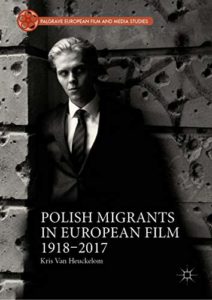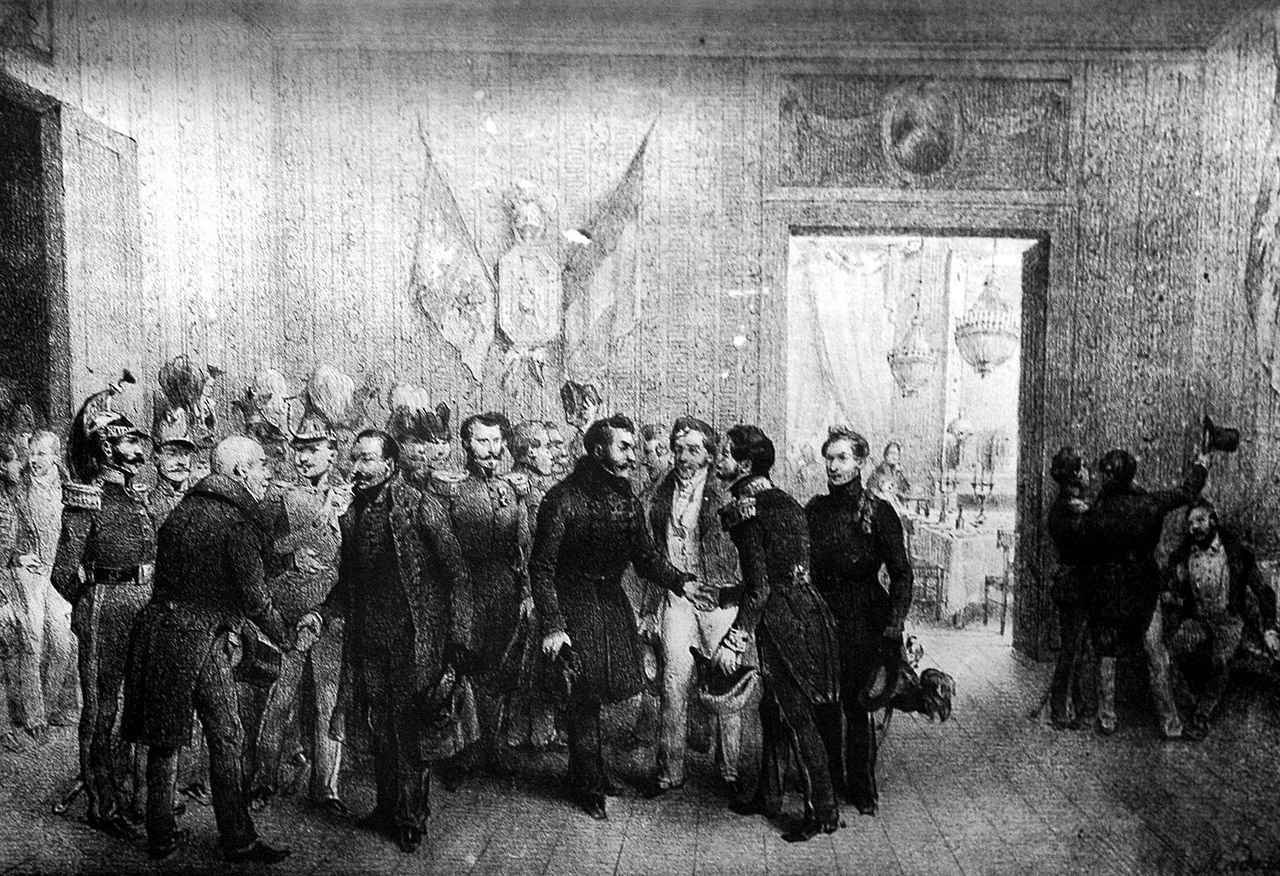Kris Van Heuckelom is Associate Professor in Literary Theory and Cultural Studies at the University of Leuven (Belgium). His well-written and informative study Polish Migrants in European Film, investigates the long-running tradition of Polish migration, with its developments over the course of a century. The starting point lies in the partitions-era, the “Great Emigration”, when Poland existed only as a deterritorialized nation. Political refugees during this time had a big impact on all future discourses surrounding migration in Polish culture; they set a romanticised image of freedom-fighting Polish exiles.
by Tatjana Hofmann

Title: Polish Migrants in European Film 1918-2017
Series: Palgrave European Film and Media Studies
Publisher: Palgrave Macmillan Publication ISBN: 9783030042172 Hardcover (English)
In each chapter, Van Heuckelom provides some valuable historical and political context for the period under discussion. Within the nexus between European filmmaking and migration, his book teaches us a lot about cinema and migration history, including exiles, labour immigrants, wartime refugees, displaced persons and Cold War defectors. Thus, a wide range of representations of Polish expatriates’ experiences and practices are shown, as well as Poland’s shifting position within Europe; moving from its position in the remote Eastern part, more towards its centre.
Surprisingly, the author separates Jewish displacement from his overall corpus. This stands in contradiction to his observation that Polish and Jewish identities have become inevitably entangled over the past two centuries. (p. 9) It would have been worthwhile to take Polish-Jewish migration practices into consideration. They would also have been a tangent to Russian migration and supported the book’s aim to look at all sorts of migration. Van Heuckelom stresses the exodus from Russian lands caused by the October Revolution and the subsequent Civil War, as well as the Nazification in the 1930s, which was followed by a huge movement of refugees with a Polish background, and, as I am tempted to add, also with a Jewish, German, Austrian and Russian background. In my view, the restriction to ethnically pure migration seems primarily to work well for labour migration, yet not for politically motivated migration. Focusing on an ethnic category in the analysis of the representations of migration contributes to creating a restrictive, exclusive study of national group representation. A friendly reminder; the core idea of Europeanisation was to avoid ethnic nationalism, which has already led to several wars, and focus on building an economic supersystem instead.
Furthermore, Van Heuckelom restrains his study from considering wartime stories about Nazi or Soviet camps. What he chooses, are acclaimed art cinema productions and melodramas, romantic comedies, thrillers and adventure films by Western European and US-American film makers only. A selection of audiovisual materials which construct the role of the Polish migrant is helpfully gathered on the book’s website www.polishmigrantsineuropeanfilm.eu.
Polish characters, other than those with an African or Asian background, are not marked by their skin colour. They happen to be less objects of orientalisation, and rather of nostalgia, modernisation and Europeanisation, as the author claims. Hereby, he sticks to the subtle notion of “close Otherness” as a connecting thread throughout the analytical chapters. “Closeness” he understands as “cultural similarity and geographical proximity—as contrasted with the more distant position of postcolonial migrants—but simultaneously foregrounds the spatiotemporal tension that undermines this sense of likeness”. (p. 12) The author tends to write the most important information in brackets, like this completion to the latter definition: “in terms of coming from a part of Europe that has been perceived as being peripheral in space and backward in time.” In order to overcome this “close Otherness” the study re-integrates Poland from its semiotic periphery into the heart of Europe (without Russia).
Another useful, though not new, theoretical foundation consists in the analysis of chronotypes on the screen: spatiotemporal arrangements of migration-related filmmaking with reference to Hamid Naficy’s An Accented Cinema: Exilic and Diasporic Filmmaking (2001) who applies Mikhail Bakhtin’s theory. The Russian philosopher remains one rare connection to the shifted European border which excludes this Eastern part from Europe.
After a comprehensive overview of the complex intersections between film and migration, history and theory, Van Heuckelom successfully conveys a feeling of the vibrant interwar years with their emphasis on entertainment, experiment and extravagance. Here, the rise of interwar “Russomania” after Russian exile to France and Germany becomes a contrasting branch for screen performances of three actors from East Central Europe who play “Polish” roles: Jan Kiepura, Pola Negri and Elvire Popesco.
The next part is dedicated to the time period of WWII and the first three decades of the Cold War. From 1936 to 1956, almost 25 million people living on Polish territories were affected by a form of relocation. The films discussed represent the “process of ideological Othering, from depictions of chaos and distrust in the early postwar years to the cinematic emergence of a new geopolitical order (in which Polish characters—expatriates, defectors and immigrants—would come to play a highly ambivalent role)”. (p. 70) The “entertainment paradigm” of the 1930s fades in favour of stories with social concern. Afterwards, the study traces the transition from a self-defensive position to a self critical one in a series of existentialist films from the 1960s to 1970s.
In the subsequent discussion of the “Polish crisis” (1980–1983), we learn about the Solidarity period when the international status of Polish cinema has grown enormously. The main argument here is that the 1980s corpus initiated some mutual rediscovery between East and West after Andrzej Wajda’s Man of Marble (1976) and Man of Iron (1981) spread sympathy for the freedom-loving spirit of the Polish opposition movement around Solidarity.
The study reaches its culmination when looking at the early post-communist period up to the moment of EU enlargement in Chapter 6. The growing prominence of Polish labour migration in European filmmaking is shown within broader European mobility practices on the East–West axis. We encounter the type of the empowered, mediating and queer Polish migrant: he or she challenges and complements the local communities. The biographies of Polish actresses and actors show the international dimension of their careers.
As a reader with a German and Russian background I am thankful for insights concerning several traces to German cinema, particularly the accents on male-female representation. For example, Van Heuckelom highlights the figure of Franciszek Kurowski in the earliest and oldest European film production of contemporary migration-centred cinema – R. W. Fassbinder’s interethnic romance Ali: Fear Eats the Soul is (Angst fressen Seele auf, 1974). In this movie, the Polish worker stays diegetically absent, but contrasts with the typical Mediterranean Gastarbeiter. In general, a lot of German films with Polish characters stick to a binary logic which opposes a – non-existing – homogeneous German Self to a threatening Polish Other. Polish immigrants in 1990s German film are well performed by Mirosław Baka in the role of a labour migrant in Michael Klier’s Berlin diptych The Grass is Greener Everywhere Else (Überall ist es besser wo wir nicht sind, 1989), Ostkreuz (1990) and Uli Schüppel’s 1992 film Fatherland (Vaterland). A happy end is offered in Nachbarinnen (Neighbours, 2004), a Polish-German love story set in former East Germany.
The last chapter takes into account the institutional perspective by focusing on the relevance of the Polish Film Institute for the post-1989 paradigm. This Institute was significant for the “dekitschification” of Polish migrant roles in post-enlargement filmmaking. With the example of various post-2004 productions, the author finds a cinematic equivalent of what urban sociologists call “ethnic succession” – Europeanisation makes Polish migrant characters lose the label of a blue-collar worker, turning them into free moving citizens. Yet they start to suffer from same problems as Western European locals.
To conclude, the Polish representation of migrants repeats Europe’s arrogance towards non-European migrants. The author seems to justify this tendency: “Meanwhile, the fact that post-enlargement Poland has been much more eager to welcome Ukrainian job seekers than (non-white) immigrants from further afield suggests that the country is simply following a tried and tested trajectory of Europeanisation, giving preference to “close Others” over more distant ones.” (p. 263) This does not sound just to me.
Ultimately, this study is about the question: “What kind of Europe do we want and who is allowed to become part of it?” (p. 260)
Author: Tatjana Hofmann, Zurich University.





